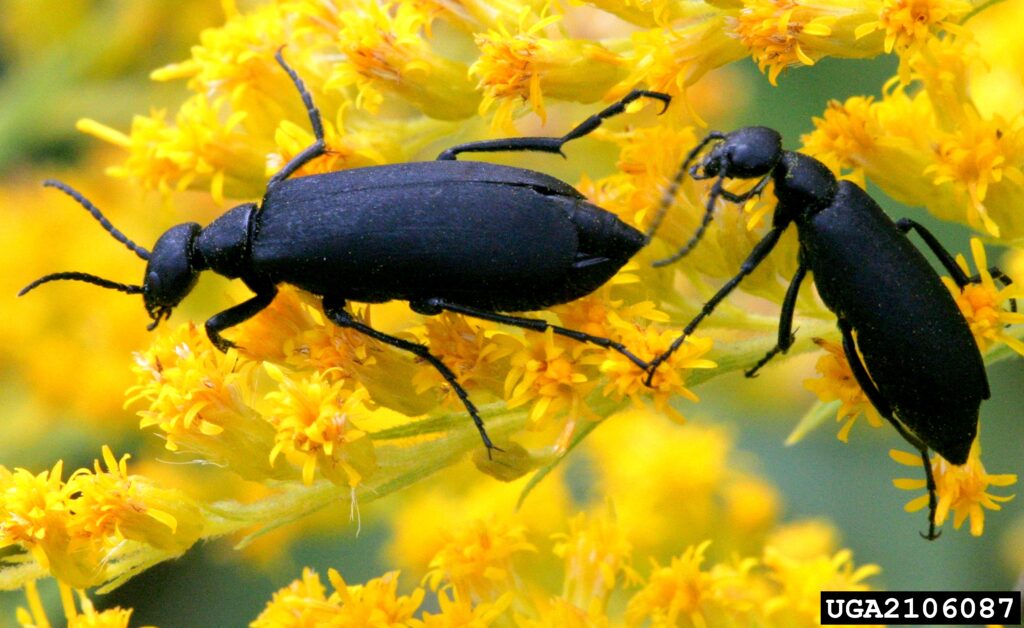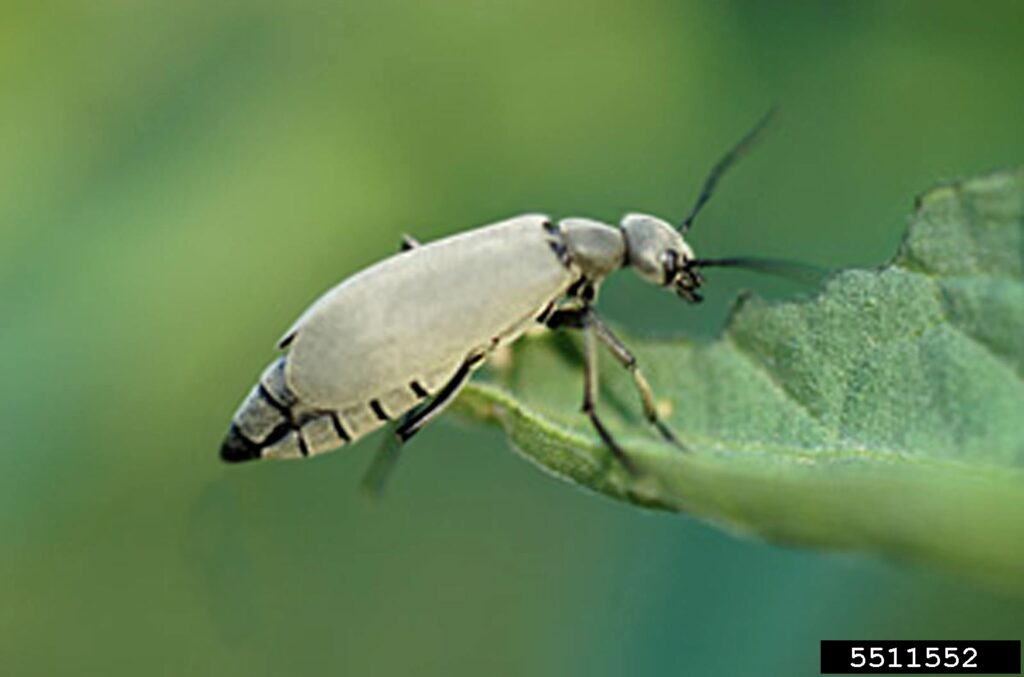Description
Blister beetles are very rare in Ontario but have been occasionally found in alfalfa fields north of Lake Erie. They are more common in arid climates, such as the U.S. Midwest, and are often associated with grasshopper infestations. The three most common species are the black blister beetle (Epicauta pensylvanica), the ash grey blister beetle (Epicauta fabricii) and the striped blister beetle (Epicauta vittata). Blister beetles have soft bodies 1–2.5 cm (3/8 –1 in.) long. The thorax between their head and abdomen is long and narrow, making it look like a neck. Their wings tend to be shorter than their abdomen.
The black and ash-grey blister beetles are solidly coloured as their names describe (Figures 1 and 2). The striped blister beetle is black and yellow. Its head has two black spots, and its thorax has two black stripes running lengthwise. The wing covers typically have two black stripes; striped blister beetles from the Southern U.S. may have three black stripes.


Life Cycle
There is one generation per year. Eggs are laid in the soil in July or August. Larvae hatch 2–3 weeks later and are beneficial, feeding on grasshopper eggs. Larvae go through three instar phases, then pupate to overwinter in the soil. Adults emerge in June or July and feed on pollen, nectar and flowers of host plants such as alfalfa and flowering weeds. They mate, and after 2 or 3 weeks, the female lays eggs.
Damage
Blister beetles do not negatively impact crop growth.
CAUTION! Blister beetles contain cantharidin, which causes blisters to the skin on contact and inside the digestive tract if eaten. Horses are particularly sensitive to cantharidin, though ruminants are also affected. Symptoms of blister beetle poisoning include blistering on the skin (especially around an animal’s lips), mouth ulcers, colic, diarrhea, bloody feces and bloody urine. If enough cantharidin is ingested, death may occur within 72 hours.
Scouting Technique
Scout for blister beetles 2–3 days before cutting, focusing on the field edges and any areas with flowering weeds. The beetles tend to congregate in clusters. If blister beetles are found, delay hay harvest until the beetles have left the field.
Threshold
There are no established economic thresholds for blister beetles. Presence of these insects will affect marketability of the crop.
Management Strategies
To avoid contaminated hay, producers should cut alfalfa before it reaches 5% bloom, which reduces the crop’s appeal to the beetles. First cut hay is typically safe from beetles as the insect will still be below ground in its larval stages. Scout all other cuttings for beetles prior to harvest. Dead blister beetles contain the same amount of toxins as live ones, so insecticides are not recommended for blister beetle control. Avoid crimping the crop, as crimpers can crush and kill blister beetles in the hay. Swathing without crimping may allow some of the blister beetles to leave the field before baling.